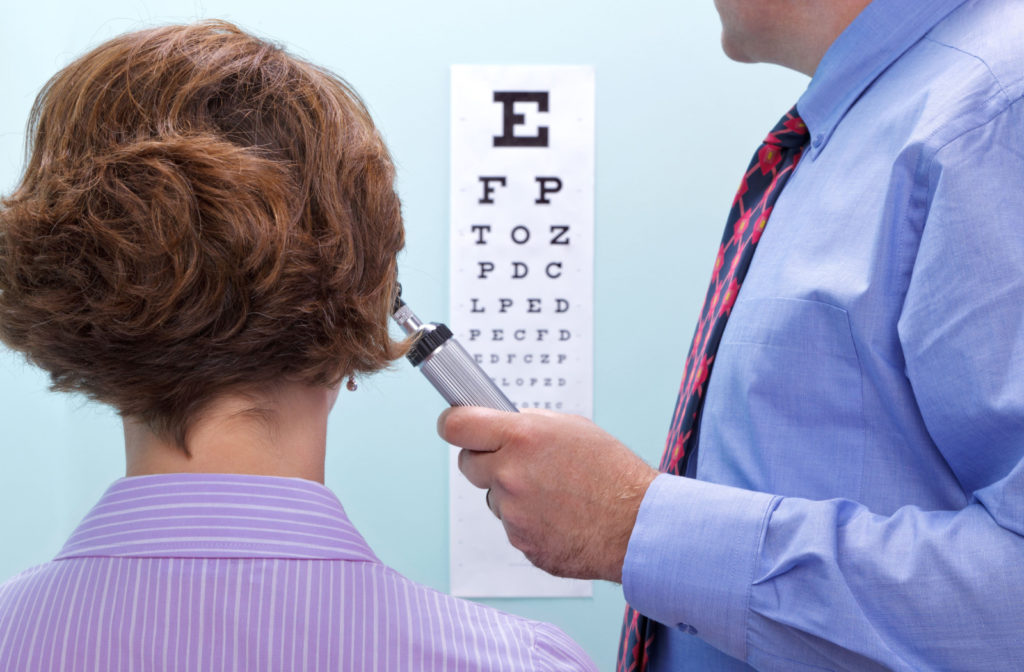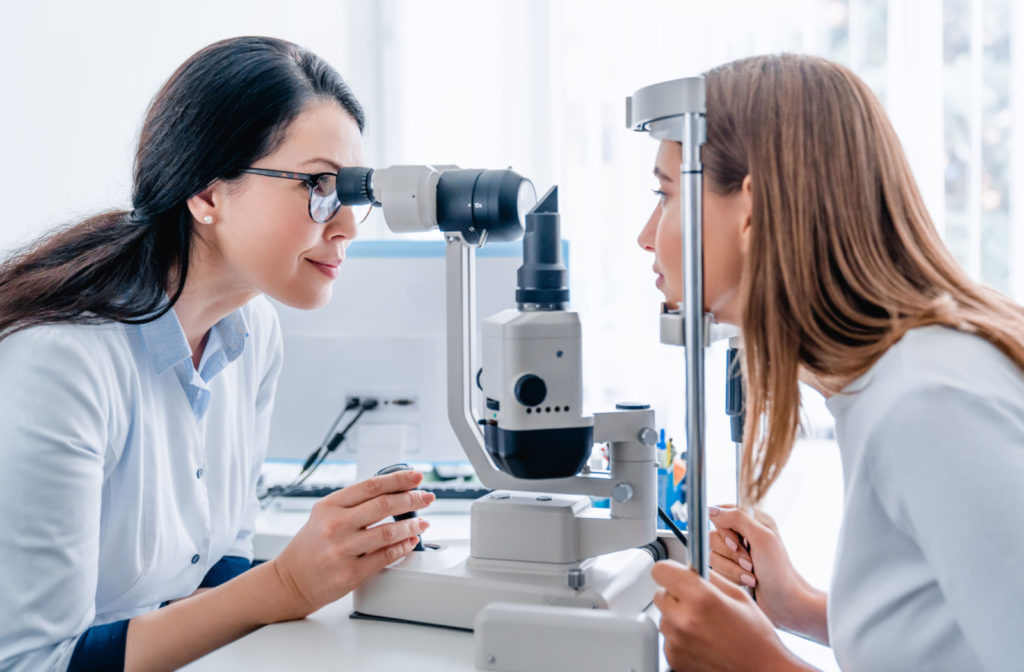There are many eye conditions that can become more common as you get older, making it more and more essential to regularly visit your optometrist for comprehensive eye exams. Many of those conditions—like macular degeneration—rarely show any symptoms when they begin to develop.
However, since their earlier stages are often more treatable, it’s crucial to have an optometrist check your eyes so you can get a clean bill of health.
An optometrist can diagnose age-related macular degeneration (AMD) during a comprehensive eye exam. We can perform a series of tests related to different eye conditions, and we may perform a specialized search if you’re at risk of developing AMD. With the use of special machines like an ophthalmoscope or OCT machine, we can thoroughly examine the health of your eyes.
What Is Macular Degeneration?
Macular degeneration, also known clinically as age-related macular degeneration or AMD, is a progressive eye condition that can cause damage to your central vision. It often develops due to age, and it affects the macula—a part of the retina located at the back of your eye.
As you get older, your eyes can become less elastic and begin to lose their ability to focus clearly on objects at different distances. AMD is a leading cause of vision problems in older adults and can progress at different speeds depending on your overall eye health and other medical factors.
There are 2 types of AMD:
- Dry AMD is significantly more common and often occurs due to the macula becoming thinner as you get older. Dry AMD typically progresses slowly. While there are no treatment options available for this version of AMD, there are preventative steps you can take to manage its effects.
- Wet AMD is more rare and often develops due to the growth of abnormal blood vessels at the back of the eye. Many cases of dry AMD can potentially become wet AMD, which can cause faster vision loss than the dry form. Fortunately, there are treatment options available for wet AMD.
Dry AMD has 3 stages that an optometrist can use to determine what to expect: early, intermediate, and late-stage AMD. In the early and intermediate stages, some people may not notice that their eyes are affected by AMD.
Wet AMD is always considered a late-stage form of this condition. There is good news, though—neither dry nor wet AMD typically affect your peripheral vision, so in many cases, they can’t cause total vision loss.
What Are the Symptoms of Macular Degeneration?
Since there are 3 separate stages of AMD, the symptoms can vary depending on how far the condition has progressed.
When diagnosed with early-stage AMD, you may not notice any symptoms at all. Over time, as the condition progresses, you may notice:
- Difficulty seeing in low-light conditions
- Blurry central vision
- Minor visual distortions, like straight lines appearing wavy or like they’re moving
- Difficulty recognizing faces
- A clearly defined blurry spot in the center of your vision
If your AMD progresses into the late stage (or is considered wet AMD), you may experience:
- Blurry vision
- Difficulty focusing on nearby objects in your central vision
- Straight lines appearing significantly distorted
- The loss of ability to see fine details
It’s important to know that AMD doesn’t always affect both eyes—many people experience it in only one eye. Fortunately, if it begins to develop, you can begin taking preventative measures as recommended by an optometrist.

How Can You Tell if You Have Macular Degeneration?
Fortunately, macular degeneration can be diagnosed with the help of an optometrist. We can perform a comprehensive eye exam and make notes of anything that may have changed since you last visited to determine if you’re developing an eye condition.
When you visit your optometrist, testing for AMD may include:
- A visual acuity test: This is the test where you cover one eye and read words or letters from a chart at a set distance. Since AMD affects central vision, this can allow an optometrist to determine if you’re having difficulty with your eyes.
- Ophthalmoscopy: This noninvasive test allows an optometrist to look inside your eye and determine the health of your retina.
- A grid test: If you have intermediate or late-stage AMD, the lines of a perfectly straight grid often look curved, warped, or distorted.
If we confirm you have—or may be beginning to develop— AMD, we may perform an optical coherence tomography (OCT) test. This helps us determine if you have new blood vessels developing in your eye and can help determine whether or not you’re developing wet AMD.
Your likelihood of developing age-related macular degeneration can increase as you get older and your eye becomes less flexible over time. Because this condition rarely shows any symptoms when it begins to develop, it’s essential to regularly visit your optometrist for comprehensive eye exams if you’re at risk of developing AMD.
Where to Get Help for Your Eyes
At San Clemente Optometry, we know how important your vision can be. Your ability to see details clearly, recognize faces, and see clearly can be essential, and we’re here to help you keep your vision clear.
To speak with an experienced optometrist and get tested for AMD, book an appointment with us today!




